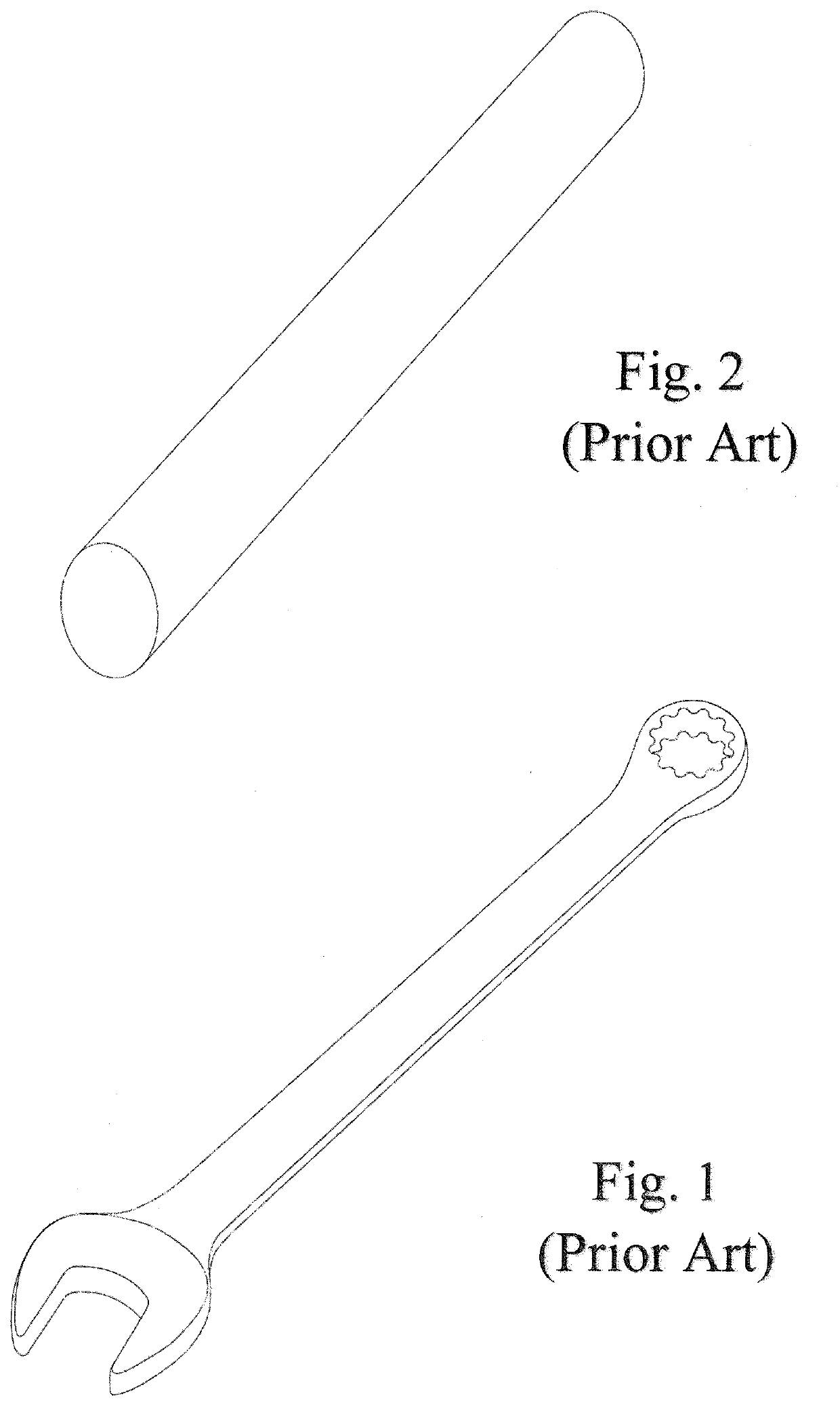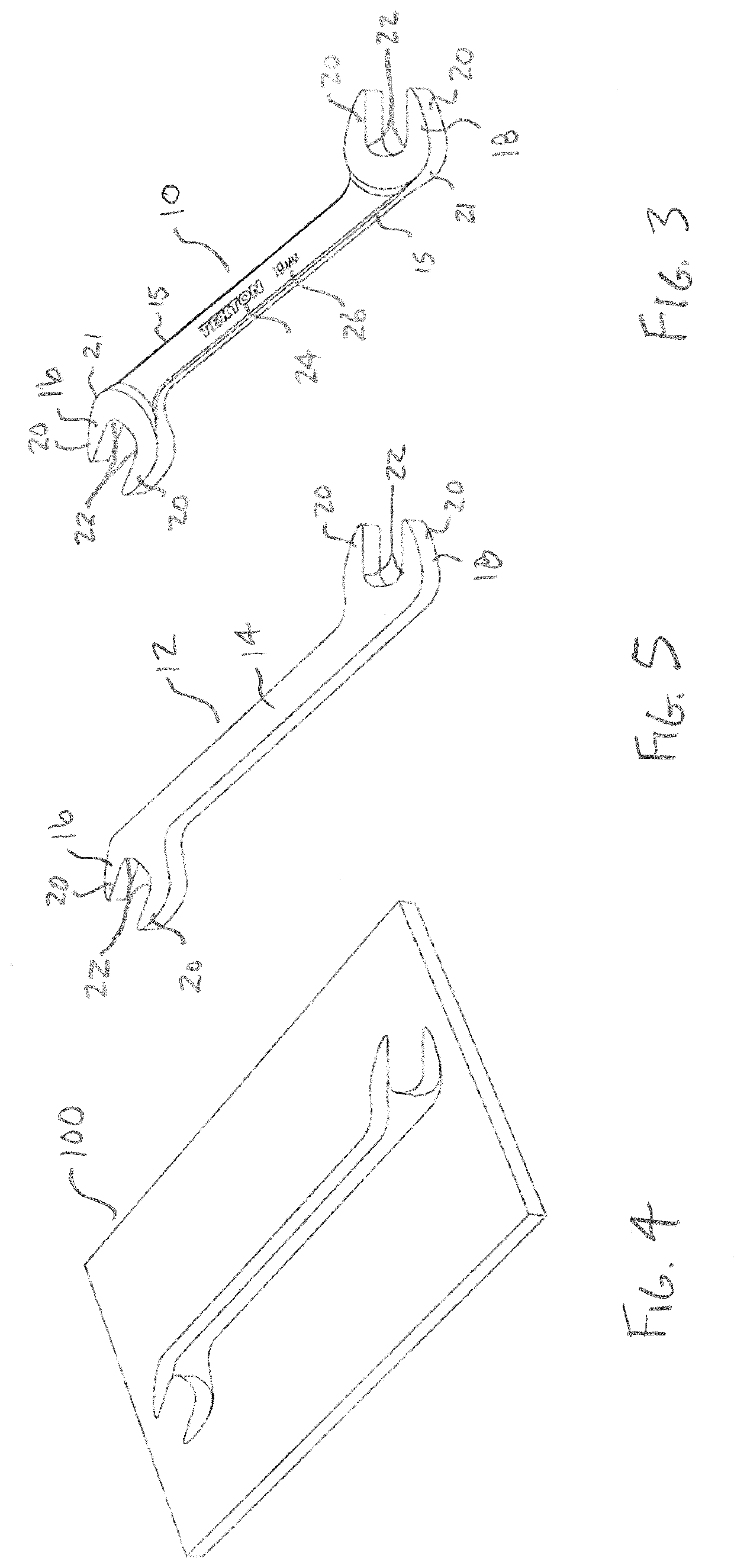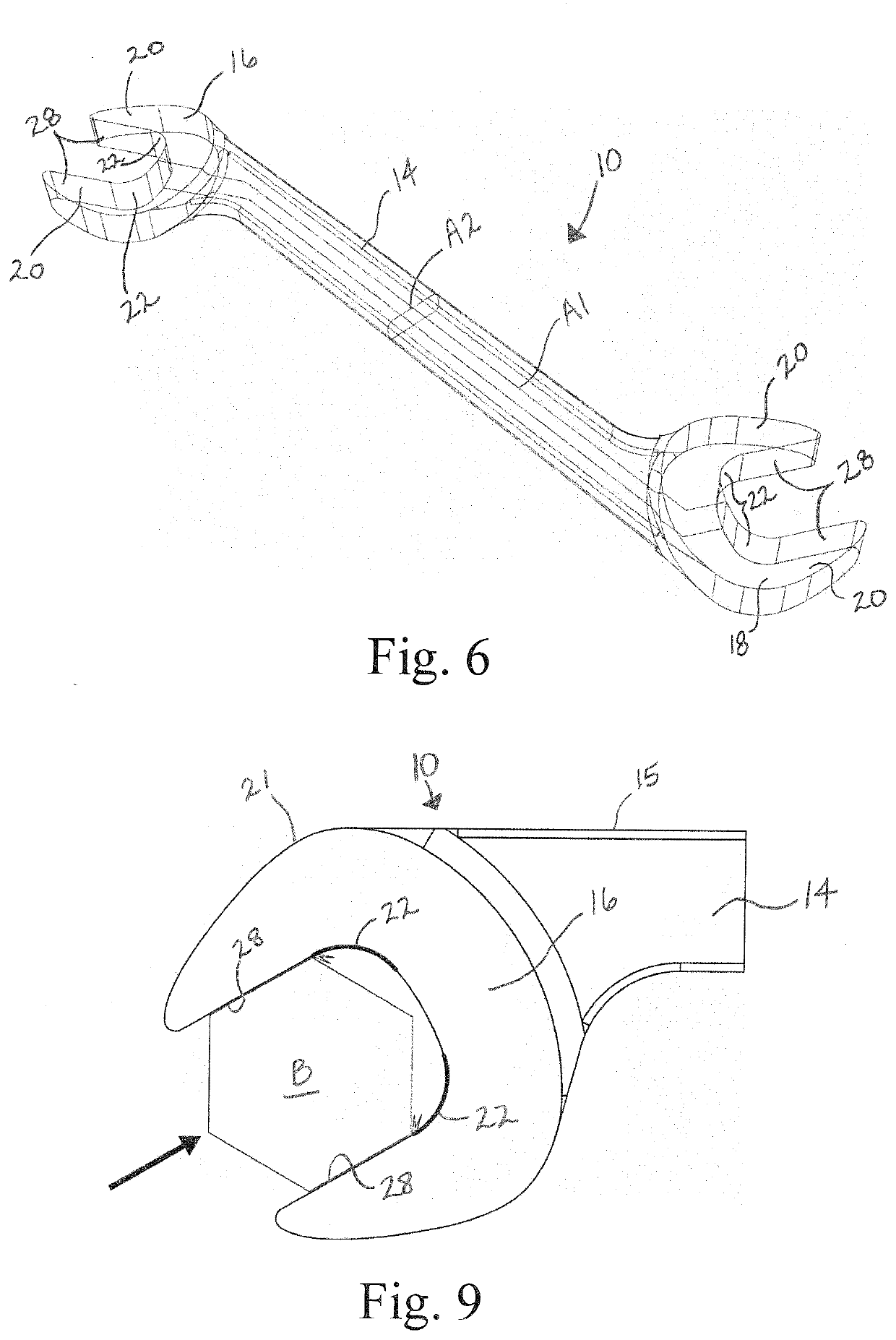Tool manufacturing method
- Summary
- Abstract
- Description
- Claims
- Application Information
AI Technical Summary
Benefits of technology
Problems solved by technology
Method used
Image
Examples
Embodiment Construction
Overview
[0029]The present invention is directed to a method for manufacturing hand tools. In the illustrated embodiment, the method includes the general steps of providing a flat stock 100, such as sheet or plate stock, having a thickness that is at least equal to the maximum thickness of the tool; laser cutting the sheet or plate stock 100 to form a tool blank 12 by cutting the general two-dimensional shape of the tool; and three-dimensionally shaping the tool blank 12 into a three-dimensional workpiece 10 using one or more machining operations that give the tool blank the desired three-dimensional shape. After laser-cutting, the method may include supplemental sanding and / or grinding steps that remove any irregularities resulting from the laser cutting process and help to provide the tool blank 12 or three-dimensional workpiece 10 with desired final shape and surface quality. The method may also include the step of heat treating the tool blank 12 or three-dimensional workpiece 10 ...
PUM
| Property | Measurement | Unit |
|---|---|---|
| Angle | aaaaa | aaaaa |
| Thickness | aaaaa | aaaaa |
| Force | aaaaa | aaaaa |
Abstract
Description
Claims
Application Information
 Login to View More
Login to View More - R&D
- Intellectual Property
- Life Sciences
- Materials
- Tech Scout
- Unparalleled Data Quality
- Higher Quality Content
- 60% Fewer Hallucinations
Browse by: Latest US Patents, China's latest patents, Technical Efficacy Thesaurus, Application Domain, Technology Topic, Popular Technical Reports.
© 2025 PatSnap. All rights reserved.Legal|Privacy policy|Modern Slavery Act Transparency Statement|Sitemap|About US| Contact US: help@patsnap.com



